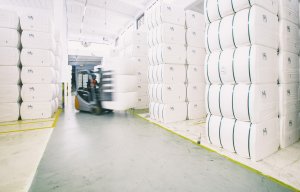
Upgrade for Lenzing in China and Indonesia
Lenzing Nanjing Fibers, the Chinese subsidiary of Lenzing AG, has successfully started up a new production line which will offer a nominal capacity of 60,000 tons per annum of viscose fibres for textile applications and the nonwoven industry mainly for the Asian market. According to Lenzing, approximately 60-70 % of the viscose fibre produced in Nanjing goes into knits and much of it is sold in the domestic market. Construc

17th August 2011
Knitting Industry
|
Nanjing

Lenzing Nanjing Fibers, the Chinese subsidiary of Lenzing AG, has successfully started up a new production line which will offer a nominal capacity of 60,000 tons per annum of viscose fibres for textile applications and the nonwoven industry mainly for the Asian market.
According to Lenzing, approximately 60-70 % of the viscose fibre produced in Nanjing goes into knits and much of it is sold in the domestic market.
Construction took approximately one year, and important key components were provided by the group's subsidiary Lenzing Technik GmbH. The start-up of the new line almost doubled the annual production capacity of Lenzing Nanjing Fibers to nearly 140,000 tons of viscose fibres. It is already expected to reach its full nominal capacity at the beginning of the fourth quarter of 2011. The Nanjing plant is Lenzing Group's third-largest production location and began manufacturing in 2007.
Lenzing is currently expanding the capacities of nearly all of its locations worldwide. Lenzing Group plans to increase its total capacity from 710,000 tons at the beginning of 2010 to over 1.1 million tons by 2015. Lenzing says this comes in reaction to the growing demand for high-quality fibres as a consequence of the massive trends of population growth and rising prosperity as well as the trend towards sustainability.

Business intelligence for the fibre, textiles and apparel industries: technologies, innovations, markets, investments, trade policy, sourcing, strategy...
Find out more